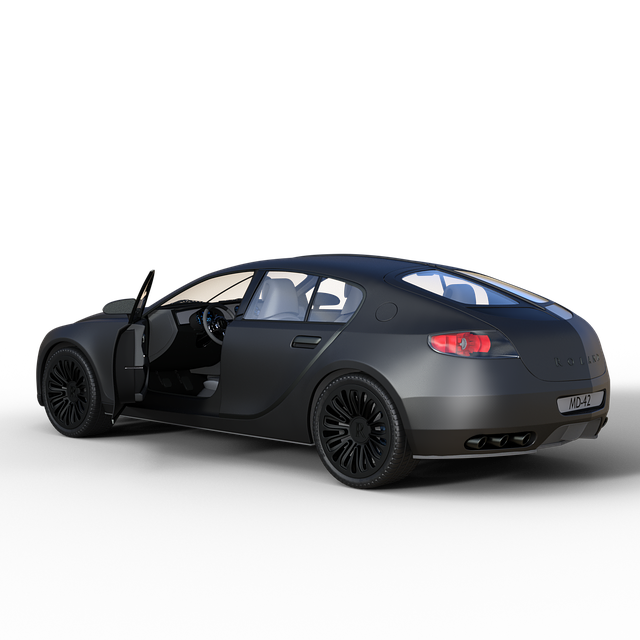To select the best car insurance policy, assess risk factors like driving history, vehicle condition, location, and usage. Understand six primary coverages (Collision, Comprehensive, Liability, PIP/Medical Payments, Uninsured/Underinsured Motorist, Personal Effects Protection) to make an informed choice. Carefully balance cost and comprehensive protection by comparing quotes from multiple insurers using online tools or direct communication. Examine coverage details, deductibles, and cost, ensuring policies meet your needs and offer adequate protection. Regularly review policy documents and adjust as life changes to maintain optimal protection while avoiding unnecessary costs.
Selecting the best car insurance policy is a crucial step in protecting your investment and ensuring peace of mind on the road. Understanding your insurance needs starts with assessing risk factors like driving history, vehicle type, and location. This guide will walk you through different types of coverages, help evaluate policy components, balance cost and comprehensive protection, compare quotes from multiple insurers, and offer additional tips for maximizing coverage benefits. By following these steps, you’ll be well on your way to choosing the ideal car insurance policy.
Understanding Your Insurance Needs: Assessing Risk Factors

When selecting the best car insurance policy, understanding your insurance needs begins with assessing risk factors. This involves evaluating several personal and vehicular attributes that can impact your likelihood of being involved in an accident or incurring damage. Key considerations include your driving record, vehicle make and model, age and condition, as well as your location and usage patterns. For instance, a clean driving record and a safe, well-maintained vehicle typically translate to lower risk, potentially leading to more affordable premiums. Conversely, a history of accidents or a high-risk vehicle may necessitate higher coverage amounts or specialized policies.
Location also plays a significant role in determining insurance needs. Urban areas with heavier traffic and higher crime rates usually command higher insurance costs than suburban or rural locales. Additionally, how you use your car matters. If you primarily drive short distances for work or leisure, your risk profile may differ from someone who logs extensive daily mileage on highways or rough terrain. By factoring in these variables, you can tailor your insurance coverage to match your specific risks, ensuring both adequate protection and cost-effectiveness when selecting the best car insurance policy.
Types of Car Insurance Coverages Explained

When shopping for car insurance, understanding different coverages is key to choosing the best policy for your needs. There are primarily six types to consider: Collision, Comprehensive, Liability, Medical Payments (or Personal Injury Protection), Uninsured/Underinsured Motorist, and Personal Effects Protection (PEP).
Collision coverage pays for repairs or replacement if your car crashes into something, or if something crashes into it. Comprehensive coverage protects against damage from events like theft, vandalism, or natural disasters. Liability insurance is crucial as it covers damages you may cause to others’ property or injuries to others in an accident, up to your policy limits. Medical Payments and Uninsured/Underinsured Motorist protect you and your passengers for medical expenses regardless of who’s at fault. Finally, PEP covers non-motor vehicle belongings in case of theft or damage during a collision.
Evaluating Different Policy Components: What's Included?

When evaluating different car insurance policies, it’s crucial to understand what each component covers. How to choose the best car insurance policy involves careful consideration of several key elements. Start by examining liability coverage, which protects you in case you cause an accident and are responsible for damages to others’ vehicles or property. Next, consider collision coverage, which pays for repairs to your own vehicle if it’s damaged in an accident, regardless of fault. Comprehensive insurance covers a wider range of incidents like theft, vandalism, or natural disasters.
Additionally, look into personal injury protection (PIP) and medical payments coverage, which help cover medical expenses for you and your passengers after an accident, regardless of who was at fault. Finally, don’t overlook additional perks like roadside assistance, rental car coverage, and discount programs offered by various insurers. By thoroughly reviewing these policy components and understanding what’s included, you can make an informed decision when selecting the best car insurance policy for your needs.
Balancing Cost and Comprehensive Protection

When selecting the best car insurance policy, balancing cost and comprehensive protection is a delicate act. It’s essential to evaluate your budget while ensuring adequate coverage for potential risks. Car insurance policies vary widely in price, depending on factors like your driving record, vehicle make and model, location, and chosen deductibles. Understanding these variables can help you make informed decisions.
Comprehensive protection covers damages beyond accidents, including theft, vandalism, and natural disasters. While it adds to the overall cost, it offers peace of mind, especially in high-risk areas. Assessing your risk profile—your likelihood of encountering such events—is crucial. If you live in a secure neighborhood with minimal crime rates, basic liability coverage might suffice. However, if you drive through areas prone to theft or severe weather conditions, comprehensive protection may be the smarter choice, despite the higher premium.
Comparing Quotes from Multiple Insurers

When selecting the best car insurance policy, one of the most effective strategies is to compare quotes from multiple insurers. Start by gathering insurance quotes from several reputable companies using online comparison tools or direct communication. Carefully review each quote, paying close attention to the coverage details, deductibles, and overall cost. Don’t be swayed solely by the lowest price; ensure you understand what’s included in each policy and how it aligns with your needs.
Consider factors like liability limits, collision coverage options, comprehensive insurance, and any additional perks offered. Cross-check these aspects to find a balance between adequate protection and affordable rates. Remember, the best car insurance policy is one that offers comprehensive coverage without breaking your budget.
Additional Tips for Maximizing Your Coverage Benefits

When selecting the best car insurance policy, it’s crucial to understand that maximizing your coverage benefits goes beyond choosing the right provider and package. Firstly, review your policy documents thoroughly to comprehend the specifics of each coverage component. Note the deductibles, limits, and exclusions associated with collision, liability, comprehensive, and medical payments. Understanding these details empowers you to make informed decisions and tailor your policy to fit your specific needs.
Additionally, keep in mind that regular reviews of your insurance policy are essential. As your circumstances change, such as buying a new car, relocating, or encountering financial shifts, your insurance needs may evolve. Staying proactive by reassessing your coverage periodically ensures you maintain adequate protection while avoiding unnecessary costs. How to Choose the Best Car Insurance Policy involves striking a balance between comprehensive coverage and affordability, allowing you to safeguard your investment and protect yourself on the road.
